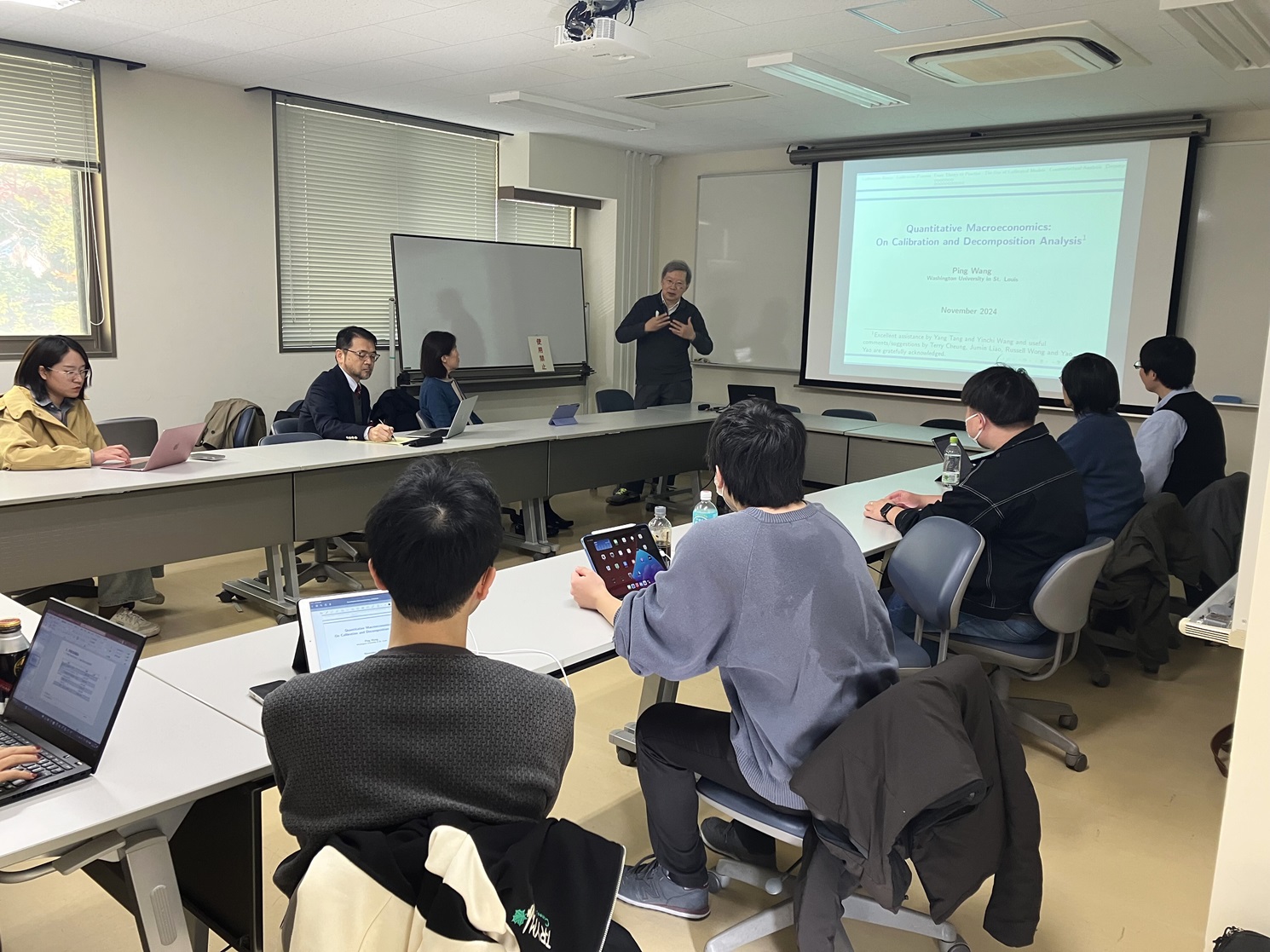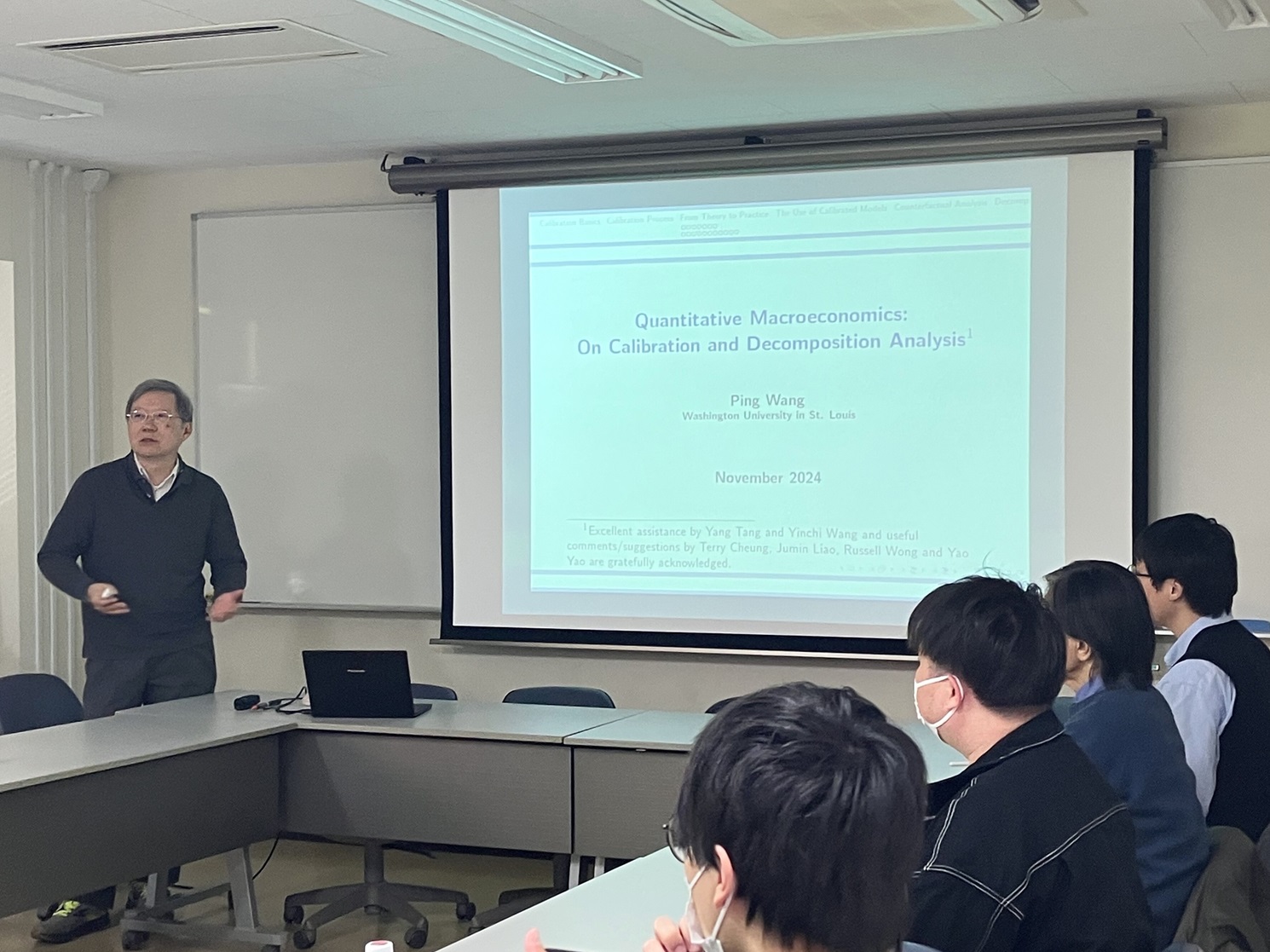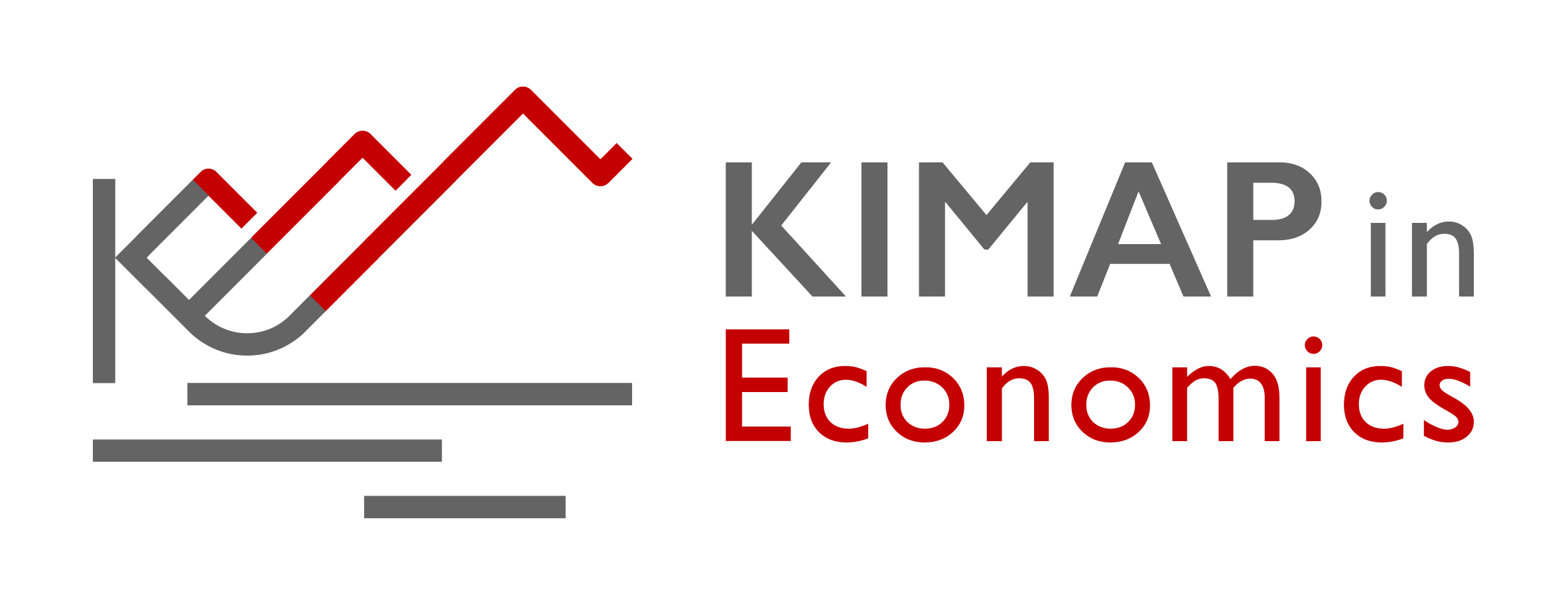Special Lecture by Professor Ping Wang from Washington University in St. Louis
As part of the internationalization of our school's graduate education, we invited Professor Ping Wang to give a special lecture in Professor Hu Yunfang‘s Special Seminar course during the second semester of this academic year.
Professor Wang, who received his Ph.D. in economics from the University of Rochester in 1987, is the Seigle Family Distinguished Professor of Arts and Sciences at Washington University in St. Louis, Research Associate at the NBER, and Senior Research Fellow at the Federal Reserve Bank of St. Louis and the ABFER of the National University of Singapore. Professor Wang is a world leader in several fields, including growth and development, monetary and macroeconomics, economic theory, and spatial and health economics. He has published more than 90 research articles in refereed journals, including American Economic Review, Review of Economic Studies, AEJ: Macroeconomics, AEJ: Economic Policy, Journal of Economic Theory (4), Journal of Monetary Economics (3), International Economic Review (5), and Review of Economics and Statistics (2).
Professor Wang's Kobe lecture on December 6, 2024 introduces us to useful and beneficial techniques in quantitative analysis, which can be widely applied to macroeconomics, international trade, and spatial economics, among others. By learning these techniques, graduate students can apply the calibration and decomposition analysis techniques to their own research projects, which will greatly promote their research level.
Focusing on "Quantitative Macroeconomics: On Calibration and Decomposition Analysis," Professor Wang first introduces the relationship between calibration and the usual empirical analysis. According to Professor Wang, the calibration process may not be successful under one theory model, so sometimes the process of "data -> theory -> data" needs to be repeated several times. Using a standard endogenous growth model with income taxation as the first example, Professor Wang intuitively shows how to group and number different variables, such as endogenous variables and structural parameters, and how to complete the calculations under different situations. The second example of a heterogeneous agent model in time and space is much more challenging for students. From this second example, students can learn about counterfactual analysis and decomposition. Finally, useful references and links are provided, which will be of great help to our students in completing their theses.
It is a great challenge for our students to learn advanced new technical methods in a short time, especially from original research articles published in top academic journals. However, the experience for our students to follow the lecture material of the leading professor and to ask questions to the foreign professor is a gratifying opportunity for their growth. We look forward to many more of these challenging opportunities in the future.
Click here for Professor Ping Wang' profile (website of WashU)
.





